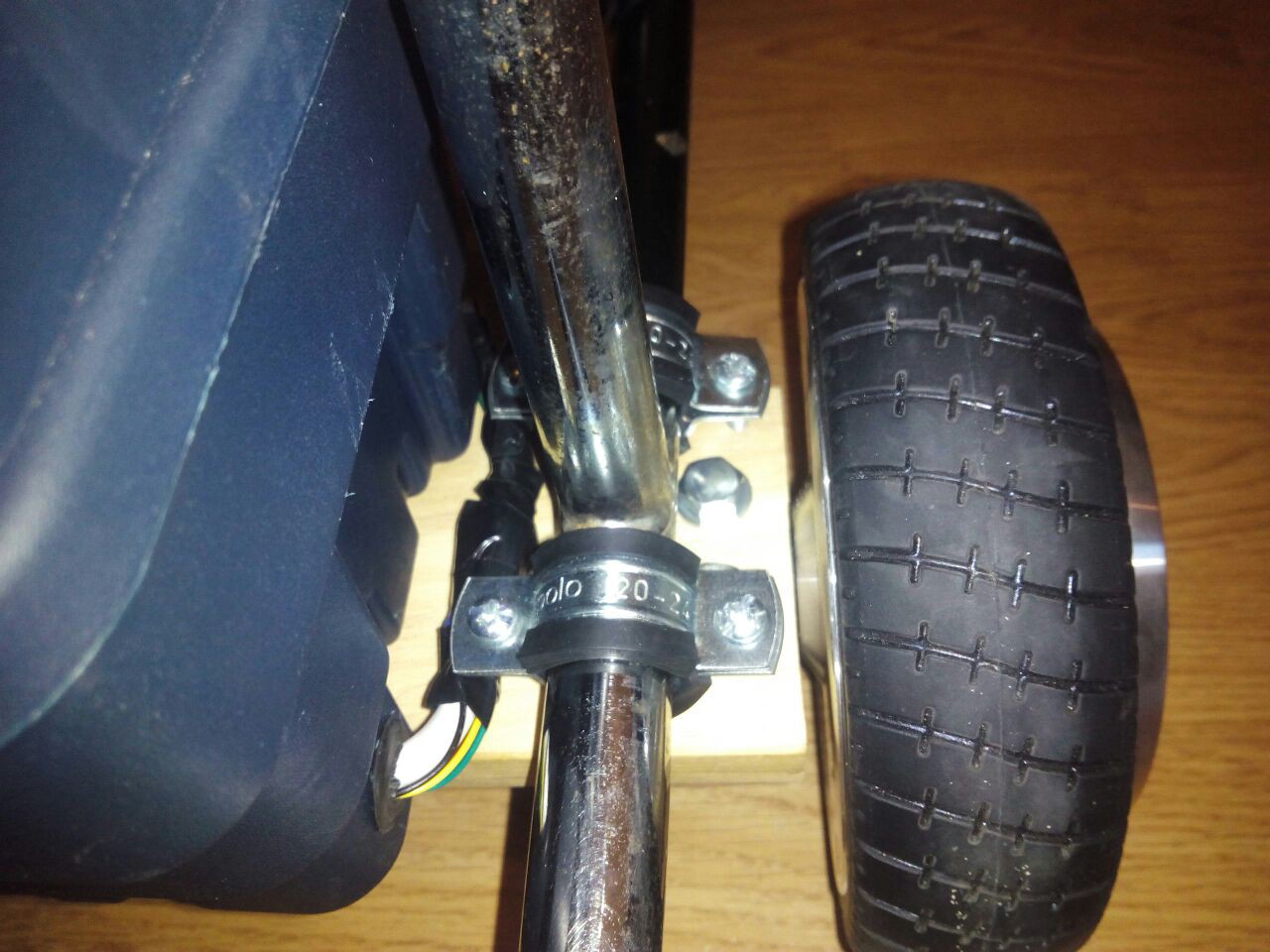The aim of this project has always been to create an open wheelchair platform, and to do so as simply as possible, which is why we have maintained the large wheels both as a structural support and to reduce the number of steps to perform.
However, when we took the chair for a spin the first time we came upon a problem we hadn't foreseen:
In theory, the larger wheels would support the user's weight and leave the board's wheels to push the chair around, simple and hassle-free. However, this is one of those times where theory and practice don't agree. While all four wheels are level and well aligned, the streets are, unfortunately, not. This causes different wheels to be touching the ground at different times and in an unpredictable manner, which can range from all wheels on ground (ideal case), to one driving wheel and one supporting (undesired turning), no driving wheels (no movement) or worst-case scenario, no supporting wheels (plastic breaks under full weight of user).
After verifying all four cases, and now with one wheel less, we decided that comercial wheelchair manufacturers only used two small driving wheels for a very good reason and that we needed to get back to the drawing board.
This time we decided to ditch the plastic printed parts and use more resistant materials that could handle the full weight on their own. Instead of having two independent blocks clamping the wheels to the frame, we decided to place a single wooden plank which would prevent them from rotating.

We milled an 8mm deep and 16mm wide channel with four M8 holes to the sides, which we used to clamp the wheel's shaft using the hoverboard's original aluminum block.


To the sides of the block we screwed two 22mm, rubber-covered, pipe brackets using M8 bolts.

These brackets were placed to each side of the vertical tube of the frame and fastened to secure the board tightly in place.

The end result is a monolithic drive system in which the weight is supported directly by the wood and aluminum holding the wheels, these are unable to rotate on the pitch direction because they are connected together, and can't slide off the frame because of the brackets.

 Alvaro Ferrán Cifuentes
Alvaro Ferrán Cifuentes
Discussions
Become a Hackaday.io Member
Create an account to leave a comment. Already have an account? Log In.